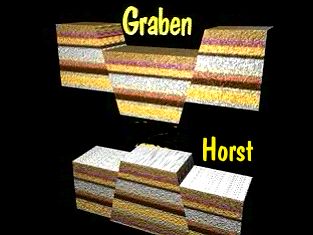
A horst and a graben are special types of normal faults, they both require two parallel faults to form.
The graben is defined by a large sinking block between two footwalls. Each side of the graben is a hanging wall. Such structures can form valleys or river basins.
A horst is formed when a central block rises up relative to two other blocks.
The horst has a footwall on each side and rises up relative to the two hanging wall units on each side.
Idaho, King Hill area
(false color)
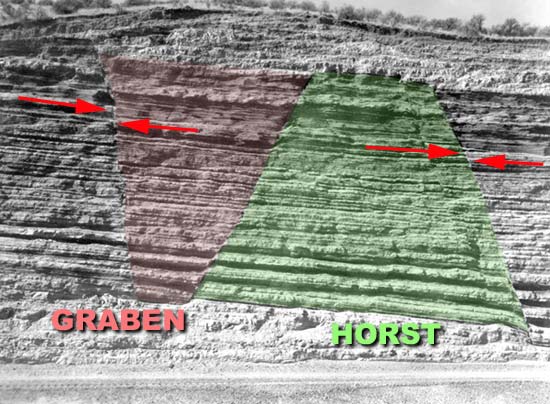
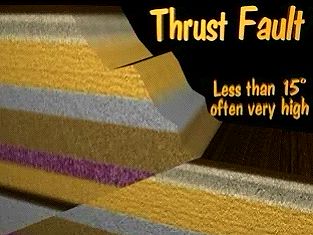
A thrust fault is a low angle fault often associated with mountain ranges. The hanging wall often shows a very high rise relative to the foot wall as much as several km.
It brings much older strata to a position above the younger strata. Over time the raised hanging wall is often eroded back away from the fault and forms a mountain environment.
Limestone thrust faulted
over shale, Presidio Co., Texas
(false color)
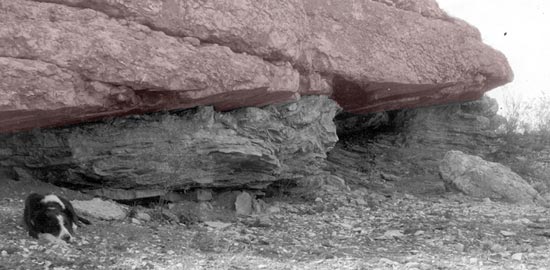
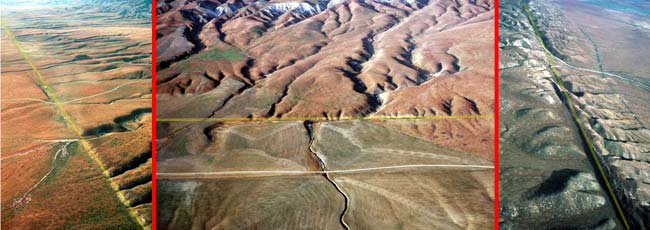
There are three "typed" bending deformations:
1.) Monocline: one sided displacement (smooth)
2.) Anticline: center rises displacement
3.) Syncline: center falls displacement

| NEXT | TOC | PREV |